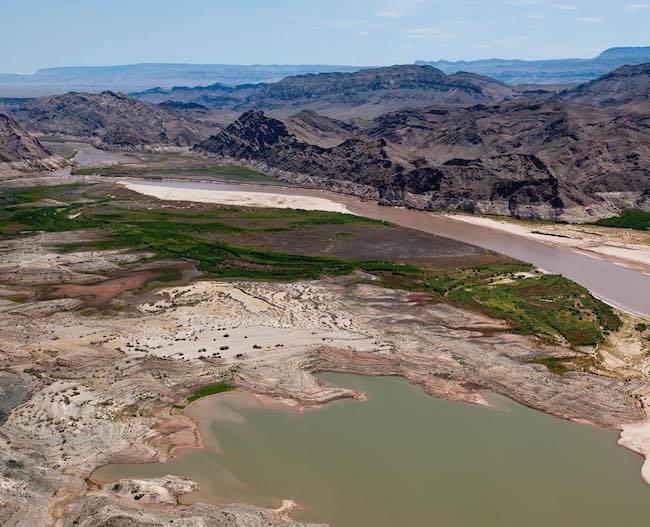
When it comes to environmental issues, it seems not even the Donald Trump administration can ignore a looming water crisis. On Friday, Interior Secretary Ryan Zinke announced a $26.3 million round of funding aimed at boosting water supplies in seven western states.
The interesting thing about this particular funding program is that it is essentially a water conservation effort. It will be run by an Interior Department bureau that affirms the impact of climate change on water resources. Rather than seeking to corral new sources of fresh water, the funding program focuses on reclaiming and reusing existing water resources including wastewater as well as "naturally impaired" surface sources.
Federal help for water conservation
The $23.6 million comes through the Interior Department's Bureau of Reclamation. A federal law called Title XVI gives Reclamation the authority to identify opportunities to reclaim wastewater and "naturally impaired" groundwater throughout the western U.S., an area that includes 17 states and Hawaii.
The law took effect in 1992, and since then the feds have chipped in a total of $639 million for its share in $2.4 billion worth of water recycling programs, according to Reclamation's own estimates.
Yes, climate change is real
President Trump is holding the nation -- and the world -- in suspense over the Paris climate change accord, so in that context it's worth noting that his own Interior Department is still on record linking water scarcity issues and climate change through the Bureau of Reclamation.
Reclamation manages the WaterSMART (Sustain and Manage America's Resources for Tomorrow) plan, which was developed under the Obama Administration to manage the 2009 SECURE Water Act. The plan kicked off in 2010 and identifies the main water resource issue:
"It is increasingly recognized that water is the primary means through which climate change impacts the earth and people’s livelihoods and well being. Water shortage and water-use conflicts have become more commonplace in many areas of the United States."
The WaterSMART home page also introduces the plan with a ringing endorsement of the accepted science on climate change:
"Significant climate change-related impacts on water supplies are well documented in the scientific literature and scientists are forecasting changes in hydrologic cycles."
Doing more with less
Coca-Cola, Levi-Strauss, MillerCoors and General Mills are among the many global companies pushing the envelop on water conservation in order to sustain their business model.The new round of Title XVI funding provides a window into how communities are also leveraging water conservation to sustain economic growth.
Here's Secretary Zinke making a pitch for the new round of conservation funding:
"This funding provides essential tools for stretching limited water supplies by helping communities reclaim and reuse wastewater and impaired ground or surface waters ...These tools are just part of the toolkit for bridging the gap between water supply and demand and thus making water supplies more drought-resistant."
The funding covers planning and feasibility studies as well as shovels-in-the-ground projects.
The lion's share of the pot will go to California, with funding for infrastructures that benefit the cities of Pasadena and San Diego, the Hi-Desert Water District, and the Santa Clara Valley Water District. Also in this group is a desalination project for the Lower Chino Dairy Area of the Inland Empire Utilities Authority.
Planning ahead for water conservation
The combined total for the six projects is almost $21 million. The remaining funds will be distributed among 13 feasibility studies in Oklahoma, Kansas, Washington, Nevada, Utah, Texas and California.
Many of the feasibility studies are aimed at municipal wastewater reclamation. Some are targeting brackish groundwater, including a study of energy-efficient treatment alternatives for groundwater desalination in Texas.
Of particular interest is a $150,000 grant to the Oklahoma Water Resources Board for a study titled, Feasibility Study of Potential Impacts of Select Alternative Produced Water Management and Reuse Scenarios.
'Produced water' refers to the brine resulting from conventional oil and gas drilling as well as fracking operations. The state of Oklahoma is looking for ways to reclaim produced water as part of its long-term water resource strategy, Water for 2060.
The Water for 2060 working group on produced water issued its final report last month. And it details some significant obstacles including the expense of water treatment and transportation, among others.
Despite the cost, Oklahoma has an urgent need to act on produced water aside from water scarcity.
The common practice of disposing produced water underground has been linked to swarms of earthquakes across a wide swath of the state that overlay a rock formation called Arbuckle.
In addition to the immediate threat to public health and well being, the earthquake swarms have caught the attention of the insurance industry. The consequent effect on insurance rates could have a ripple effect on property values and economic activity in Oklahoma.
Climate change whack-a-mole
The Interior Department is not the only federal agency that still affirms climate change on its website.
As of this writing, the Energy Department still has a vigorous climate change page up, and Energy Secretary Rick Perry has been regularly -- and loudly -- cheering on his agency's programs for renewable energy and energy efficiency.
Secretary of State Rex Tillerson is another member of the Trump cabinet endorsing climate change.
Though notoriously inaccessible to reporters, last week Tillerson signed the U.S. on to a multinational agreement called the Fairbanks Declaration, which affirms the reality of climate change and the need for urgent action.
The Declaration is posted on the State Department website, including (emphasis theirs):
"Noting the entry into force of the Paris Agreement on climate change and its implementation, and reiterating the need for global action to reduce both long-lived greenhouse gases and short-lived climate pollutants."
As for Zinke, somewhat ironically his own agency is one of the biggest renewable energy producers in the U.S. -- think Hoover Dam, and you're on the right track. The Bureau of Reclamation was established in 1902 and since then it has constructed more than 600 dams and reservoirs in 17 western states.
Reclamation bills itself as second largest generator of hydropower in the U.S., with a stable of 53 power plants producing more than 40 billion kilowatt-hours annually, the equivalent of power for about 3.5 million homes.
Although Zinke is pushing hard for fossil-friendly initiatives, the new round of Title XVI funding demonstrates just how difficult it is to push climate change out of the picture.
Image: courtesy of usbr.gov via Instagram.

Tina writes frequently for TriplePundit and other websites, with a focus on military, government and corporate sustainability, clean tech research and emerging energy technologies. She is a former Deputy Director of Public Affairs of the New York City Department of Environmental Protection, and author of books and articles on recycling and other conservation themes.














